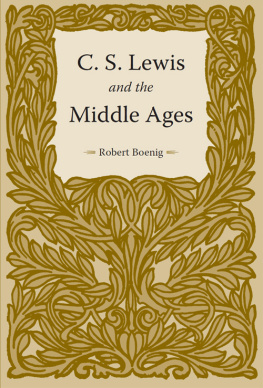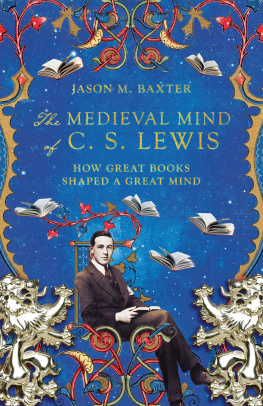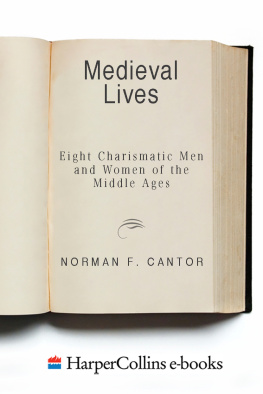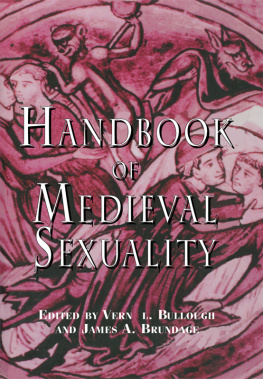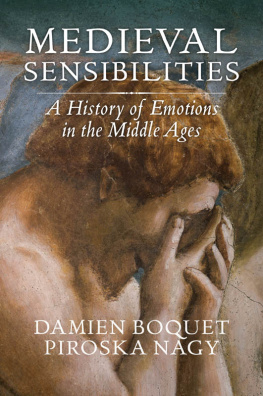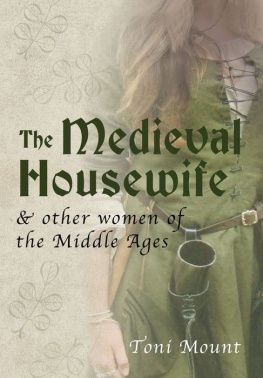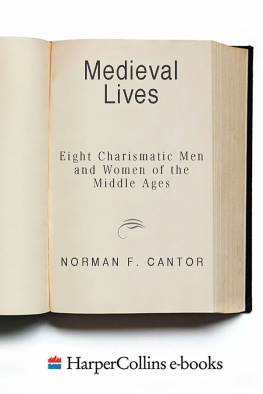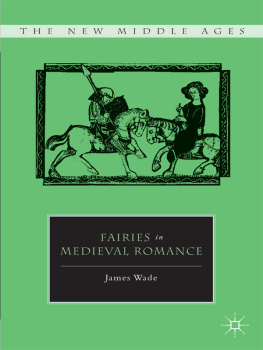Robert Boenig - C. S. Lewis and the Middle Ages
Here you can read online Robert Boenig - C. S. Lewis and the Middle Ages full text of the book (entire story) in english for free. Download pdf and epub, get meaning, cover and reviews about this ebook. year: 2012, publisher: The Kent State University Press, genre: Religion. Description of the work, (preface) as well as reviews are available. Best literature library LitArk.com created for fans of good reading and offers a wide selection of genres:
Romance novel
Science fiction
Adventure
Detective
Science
History
Home and family
Prose
Art
Politics
Computer
Non-fiction
Religion
Business
Children
Humor
Choose a favorite category and find really read worthwhile books. Enjoy immersion in the world of imagination, feel the emotions of the characters or learn something new for yourself, make an fascinating discovery.
- Book:C. S. Lewis and the Middle Ages
- Author:
- Publisher:The Kent State University Press
- Genre:
- Year:2012
- Rating:3 / 5
- Favourites:Add to favourites
- Your mark:
C. S. Lewis and the Middle Ages: summary, description and annotation
We offer to read an annotation, description, summary or preface (depends on what the author of the book "C. S. Lewis and the Middle Ages" wrote himself). If you haven't found the necessary information about the book — write in the comments, we will try to find it.
2015 winner of the Mythopoeic Societys Award for Inkling Studies
In C. S. Lewis and the Middle Ages, medievalist Robert Boenig explores Lewiss personal and professional engagement with medieval literature and culture and argues convincingly that medieval modes of creativity had a profound impact on Lewiss imaginative fiction.
The Middle Ages affected Lewis in different ways. Early in his life he found medieval narrative compelling, sharing his love for it with others and first experiencing the intense spiritual longing he termed joy through his engagement with it. He went on to build a successful career as a scholar who was, as he put it, chiefly a medievalist. His creative writing not only evokes the Middle Ages but also adapts the medieval technique of appropriating and altering prior texts as a means of generating new stories. Understanding Lewiss creative appropriation of previous sources is essential for a full assessment of his achievement as a creative writer.
For Lewis, the medieval was above all a place where he encountered the spiritual. It was through the medieval in its mode of Norse myths, particularly those involving the Norse god Balder, that he experienced joy. He delighted in hunting this joy through medieval books, like those of Malory or Chaucer, and also through more modern works that evoke the Middle Ages, such as the prose romances of William Morris. Among the works of devotion and spirituality that Lewis continually read toward the end of his life were the medieval classics The Imitation of Christ by Thomas Kempis and Revelations of Divine Love by Julian of Norwich. The medieval for Lewis was a place where he couldand didencounter God.
Using Lewiss private correspondence, scholarly books and articles, and creative writing, Boenig charts Lewiss involvement with all things medieval, demonstrating the importance of the Middle Ages in any assessment of Lewiss literary achievements.
Robert Boenig: author's other books
Who wrote C. S. Lewis and the Middle Ages? Find out the surname, the name of the author of the book and a list of all author's works by series.

